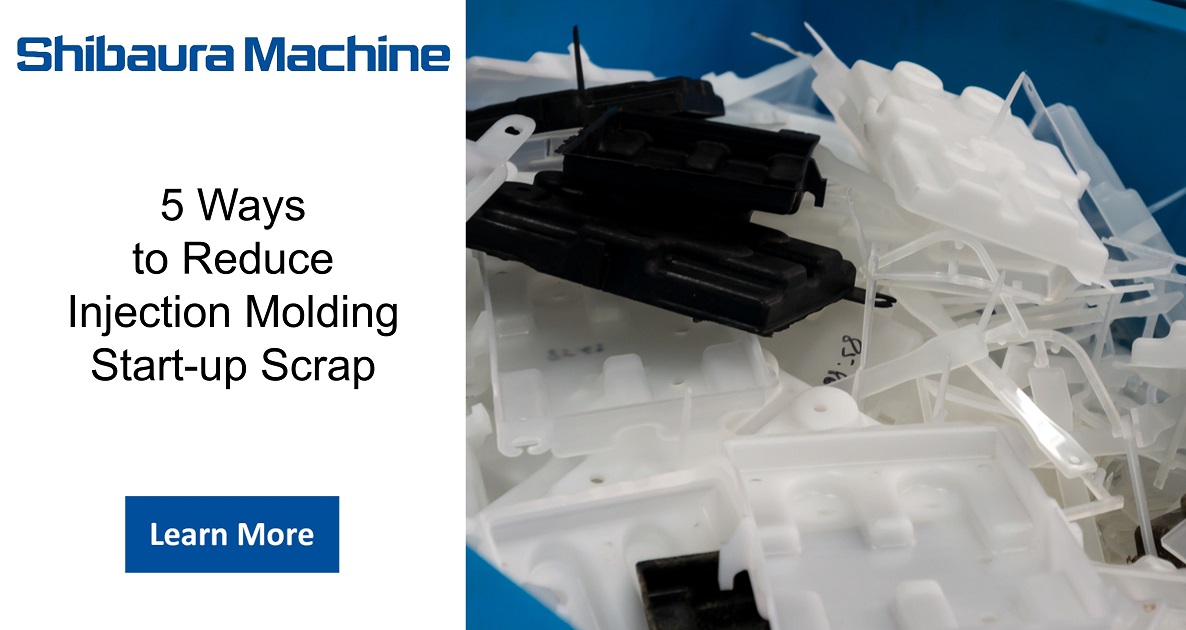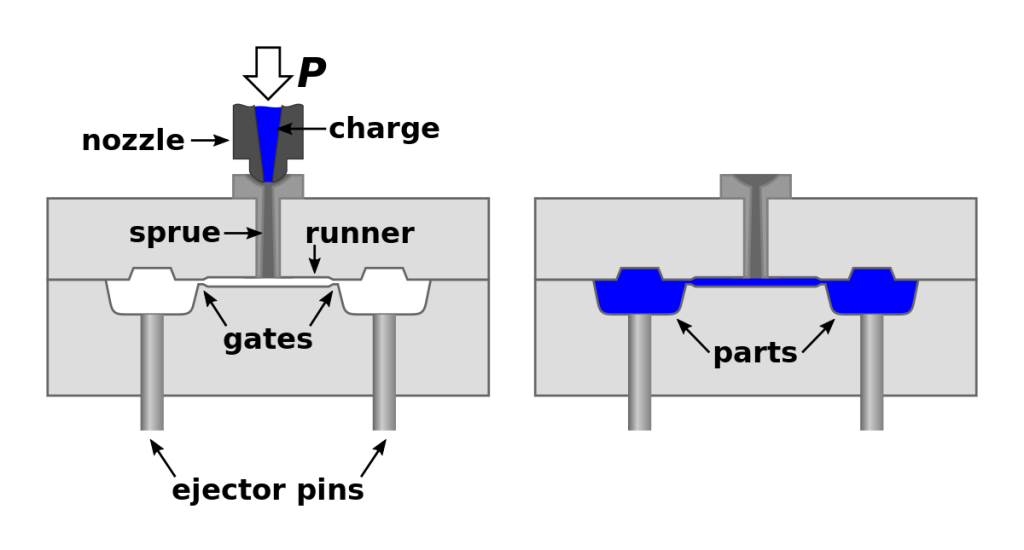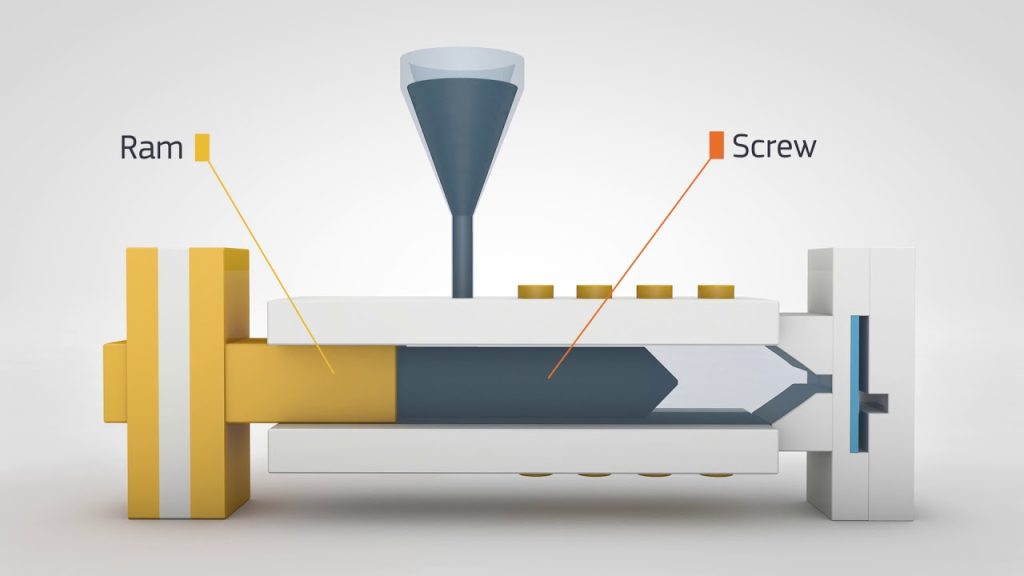Table of Contents
Injection molding is a widely used manufacturing process that involves the production of various plastic products. However, scrap in injection molding is a significant concern that can lead to unwanted expenses, delays, and environmental issues. Reducing scrap in injection molding is crucial for ensuring cost-effectiveness and sustainability in the manufacturing industry.
In this article, we will explore some essential tips and techniques on how to reduce scrap in injection molding. By implementing these strategies, you can minimize waste, increase productivity, and improve the quality of your plastic products. So, whether you are a seasoned professional or a beginner in the injection molding industry, keep reading to discover some useful insights on reducing scrap in injection molding.
How to Reduce Scrap in Injection Molding?
To reduce scrap in injection molding, follow these steps:
- Use high-quality raw materials to ensure consistency in the final product.
- Optimize injection molding parameters such as temperature, pressure, and fill speed to achieve the desired results.
- Regularly maintain and clean the injection molding machine to prevent malfunctions and downtime.
- Implement a robust quality control process to detect defects early and prevent scrap production.
How to Reduce Scrap in Injection Molding?
Injection molding is a widely used technique for manufacturing plastic products. It is a process of melting plastic pellets and injecting them under high pressure into a mold to produce a wide range of products. However, this process can lead to a large amount of scrap due to various reasons. In this article, we will discuss how to reduce scrap in injection molding.
1. Optimize the Process Parameters
The process parameters play a crucial role in injection molding. They include the temperature, pressure, injection speed, and cooling time. By optimizing these parameters, you can reduce scrap and improve the quality of the parts. For instance, increasing the injection speed can reduce the cycle time and improve the part quality. Similarly, reducing the cooling time can prevent warpage and shrinkage.
To optimize the process parameters, you need to conduct a process validation study. This involves testing different settings for each parameter and analyzing the results. You can use statistical tools such as Design of Experiments (DOE) to identify the optimal settings.
2. Use High-Quality Materials
The quality of the materials used in injection molding can affect the scrap rate. Using low-quality or contaminated materials can result in defects such as voids, sink marks, and flash. Therefore, it is essential to use high-quality raw materials that meet the specifications.
You can also use additives such as fillers and reinforcements to improve the material properties. For instance, adding glass fibers can increase the strength and stiffness of the parts. However, you need to ensure that the additives are compatible with the base resin and do not cause processing issues.
3. Maintain the Equipment
The injection molding machine and mold require regular maintenance to operate efficiently. Neglecting maintenance can lead to breakdowns, downtime, and increased scrap. Therefore, you should follow the manufacturer’s recommendations for maintenance and cleaning.
You should also inspect the machine and mold for wear and damage. Any worn or damaged components should be replaced immediately to prevent defects. Regular cleaning of the mold can also prevent contamination and improve the part quality.
4. Train the Operators
The operators play a critical role in injection molding. They are responsible for setting up the machine, loading the materials, and monitoring the process. Therefore, it is essential to provide them with adequate training and support.
You can train the operators on the process parameters, material handling, and troubleshooting. This can help them identify and resolve issues that may lead to scrap. You can also provide them with tools such as process monitoring software to track the process and detect anomalies.
5. Implement Process Monitoring
Process monitoring involves tracking the process variables in real-time to detect any deviations. This can help you identify the root cause of scrap and take corrective action. You can use sensors and software to monitor variables such as temperature, pressure, and flow rate.
Process monitoring can also help you identify trends and patterns in the process. For instance, if you notice a gradual increase in the scrap rate, you can investigate the cause and take preventive measures.
6. Implement Quality Control
Quality control involves inspecting the parts for defects and rejecting any non-conforming parts. This can help you reduce the scrap rate and improve the part quality. You can use visual inspection, dimensional measurement, and functional testing to ensure that the parts meet the specifications.
You can also implement a feedback loop between quality control and process monitoring. This can help you identify the cause of defects and take corrective action. For instance, if you detect a trend in the scrap rate for a particular part, you can investigate the root cause and adjust the process parameters.
7. Reduce Mold Complexity
The complexity of the mold can affect the scrap rate. Complex molds with multiple cavities, undercuts, and tight tolerances can be challenging to manufacture. Therefore, it is essential to design the mold with simplicity in mind.
You can use techniques such as family molds, hot runners, and conformal cooling to reduce the mold complexity. Family molds allow you to produce multiple parts in one shot, reducing the cycle time and scrap rate. Hot runners can improve the flow of the material and reduce warpage. Conformal cooling can improve the cooling efficiency and reduce cycle time.
8. Implement Automation
Automation can help you reduce human error and improve the process efficiency. You can automate tasks such as material handling, mold changing, and quality control. This can help you reduce the cycle time and scrap rate.
You can also implement robotics to perform tasks such as part removal and assembly. This can reduce the labor costs and improve the part quality. However, you need to ensure that the robots are programmed correctly and do not cause defects.
9. Monitor the Supply Chain
The supply chain can affect the quality of the materials and parts. Therefore, it is essential to monitor the suppliers and their processes. You should ensure that the suppliers meet the specifications and standards.
You can also implement a supplier scorecard to track the performance of the suppliers. This can help you identify the high-performing and low-performing suppliers and take corrective action. You can also collaborate with the suppliers to improve the quality and reduce the scrap rate.
10. Continuously Improve the Process
Continuous improvement involves identifying and implementing opportunities for improvement. You can use tools such as Lean and Six Sigma to identify waste and reduce variability. This can help you improve the process efficiency and quality.
You can also implement a culture of continuous improvement in the organization. This can encourage the employees to identify and report issues and suggest solutions. You can also provide incentives and recognition for the employees who contribute to the improvement initiatives.
In conclusion, reducing scrap in injection molding requires a comprehensive approach that involves optimizing the process parameters, using high-quality materials, maintaining the equipment, training the operators, implementing process monitoring and quality control, reducing the mold complexity, implementing automation, monitoring the supply chain, and continuously improving the process. By following these best practices, you can reduce the scrap rate and improve the part quality.
Frequently Asked Questions
Here are some frequently asked questions about how to reduce scrap in injection molding:
What is scrap in injection molding?
Scrap in injection molding refers to parts that are rejected or unusable due to defects or errors during the manufacturing process. This can include issues such as warping, cracking, or incomplete filling of the mold. Scrap can be costly for manufacturers, as it represents wasted materials and resources.
To reduce scrap in injection molding, it is important to identify the root causes of defects and implement strategies to address them. This may involve adjusting machine settings, improving the design of the mold, or training operators to identify and address issues as they arise.
What are some common causes of scrap in injection molding?
Some common causes of scrap in injection molding include issues with the mold itself, such as improper venting or incorrect temperature settings. Other factors may include problems with the injection molding machine, such as inconsistent pressure or temperature fluctuations. Human error can also play a role, such as improper handling of materials or incorrect settings on the machine.
To reduce scrap, it is important to identify and address the root causes of these issues. This may involve conducting regular maintenance on equipment, providing training and support to operators, or making adjustments to the design of the mold or materials used in the process.
What are some best practices for reducing scrap in injection molding?
Some best practices for reducing scrap in injection molding include implementing a quality control system to monitor output, conducting regular maintenance and calibration of equipment, and investing in high-quality materials and technology. It can also be helpful to train operators on best practices for handling materials and using the injection molding machine.
Other strategies may include implementing process controls to monitor and adjust machine settings, optimizing the design of the mold to minimize waste and defects, and regularly reviewing and updating production processes to identify areas for improvement.
How can quality control help reduce scrap in injection molding?
Quality control can help reduce scrap in injection molding by monitoring output for defects and errors, and identifying opportunities for improvement. This may involve implementing statistical process control methods to track trends and identify areas for improvement, or conducting regular audits to identify and address issues with equipment or materials.
By implementing a robust quality control system, manufacturers can ensure that their products meet or exceed customer expectations, while also reducing waste and maximizing efficiency.
What role do operators play in reducing scrap in injection molding?
Operators play a critical role in reducing scrap in injection molding, as they are responsible for ensuring that materials are handled and processed correctly. This may involve setting and adjusting machine settings, monitoring output for defects, and identifying and addressing issues as they arise.
To reduce scrap, it is important to provide operators with the training and support they need to effectively manage the injection molding process. This may involve providing regular training on best practices, conducting regular audits to identify areas for improvement, and implementing a system for reporting and addressing issues in real-time.
In conclusion, reducing scrap in injection molding is crucial to improving the efficiency and profitability of the manufacturing process. By implementing the aforementioned strategies such as optimizing the process parameters, monitoring and analyzing data, and investing in quality equipment and materials, manufacturers can significantly decrease their scrap rates and increase their bottom line.
Additionally, it is important to prioritize the training and education of employees to ensure they have the skills and knowledge necessary to operate the machinery and identify potential issues. Consistent maintenance and upkeep of the equipment can also prevent mechanical errors that lead to scrap.
Overall, reducing scrap in injection molding requires a multi-faceted approach that involves careful analysis, investment in quality equipment and materials, and ongoing education and training for all involved. By implementing these strategies, manufacturers can not only reduce scrap but also improve the overall quality and consistency of their products.
Request a quote today!
[contact-form-7 id="1578" title="Contact form"]
Please compress the file into a ZIP or RAR file before uploading. Alternatively, send through your RFQ by email.
enquires@unitymanufacture.com





